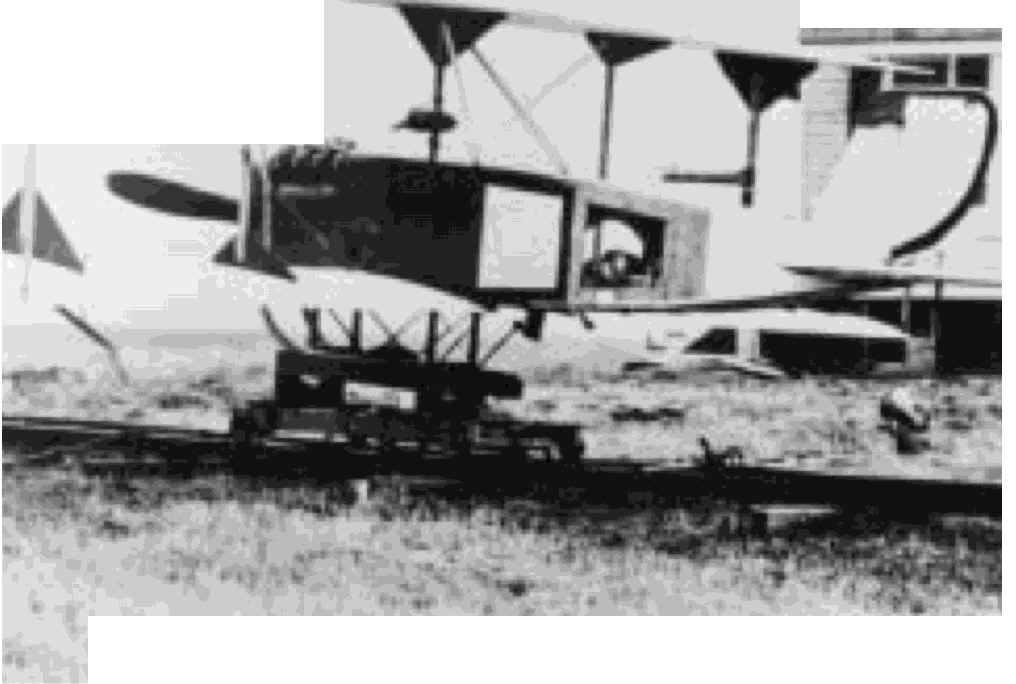
1917-Continued
--
I
r
.J8 -
I
t,
Ancestor of guided missile, World War I flying bomb 651988
15 November
A Committee on Light Alloys, with
Naval Constructor Jerome C. Hunsaker a member, was
established within the NACA to intensify efforts to
develop light metal alloys for aeronautical use.
18 November
U.S. aerial coastal patrols in European
waters began with Tellier seaplanes from LeCroisic,
France, at the mouth of the Loire River. This seaplane
patrol station, the first of eight established in France,
was established 27 November under command of
Lieutenant William M. Corry.
21 November
A demonstration of the Navy N-9 fly-
ing bomb at Amityville, Long Island, N.Y., was wit-
nessed by Major General George O. Squier, USA, Chief
Signal Officer. Subsequently the Army established a
parallel aerial torpedo project.
22 November
A Tellier seaplane piloted by Ensign
Kenneth R. Smith, with Electrician's Mate Wilkinson
and Machinist's Mate Brady on board, was forced
down at sea on a flight out of NAS LeCroisic, France,
to investigate the reported presence of German sub-
marines south of Belle Isle. Two days later, and only
minutes before their damaged plane sank, they were
rescued by a French destroyer. It was the first armed
patrol by a U.S. Naval Aviator in European waters.
24 November
In discussing the development of air-
craft torpedoes and torpedo planes, the Chief of Naval
Operations pointed out that available aircraft could
UNITED STATES NAVAL AVIATION
1910-1995
31
carry no more than a 600-pound ordnance load and
thus were incapable of delivering a torpedo with an
explosive charge large enough to seriously damage a
modern warship. This problem, the size of an effective
torpedo versus the capabilities of aircraft, retarded tor-
pedo plane development in World War I and contin-
ued as an important factor in the post war years.
1 December
NAS Pauillac, France, was established
as an active assembly and repair station supporting all
naval air stations in France.
5 December
The policy regarding helicopter devel-
opment was established by the Secretaries of the War
and Navy Departments on the basis of recommenda-
tions made by the Joint Technical Board on Aircraft.
Basically, need for improvements in powerplants and
propellers was recognized as necessary if a successful
helicopter was to be obtained, but actual support of
development efforts was to be limited to moral
encouragement until a vendor had demonstrated a
helicopter of military value.
7 December
Fighter-type aircraft development was
initiated with the Secretary's authorization for the
Curtiss HA, or "Dunkirk Fighter." This single-pontoon
seaplane was equipped with dual synchronized
machine guns forward and dual flexible machine guns
in the rear cockpit.
7 December
The Naval Aeronautic Station Pensa-
cola, Fla., was redesignated a Naval Air Station.
22 December
The addition of an Aerography School
in the training program at MIT was marked by the start
of classes with one student enrolled. A major portion of
the school's new instruction program was carried out at
the Blue Hill Observatory, Harvard University, but some
classes were also held at the Aerographic Laboratory on
the MIT campus. Of 55 men enrolled in the school, 54
qualified as aerologists by the end of the war.
31 December
The First Aviation Squadron of the
Marine Corps, commanded by Captain William M.
McIlvain, USMC, transferred from Mineola, N.Y., to
Gerstner Field, Lake Charles, La., for advanced training
in landplanes.
1918
1 January
The Experimental and Test Department at
Pensacola, Fla., was transferred to NAS Hampton
Roads, Va., to overcome difficulties arising from the
remoteness of the former location from the principal
manufacturing and industrial areas.
 |
9 |
 |